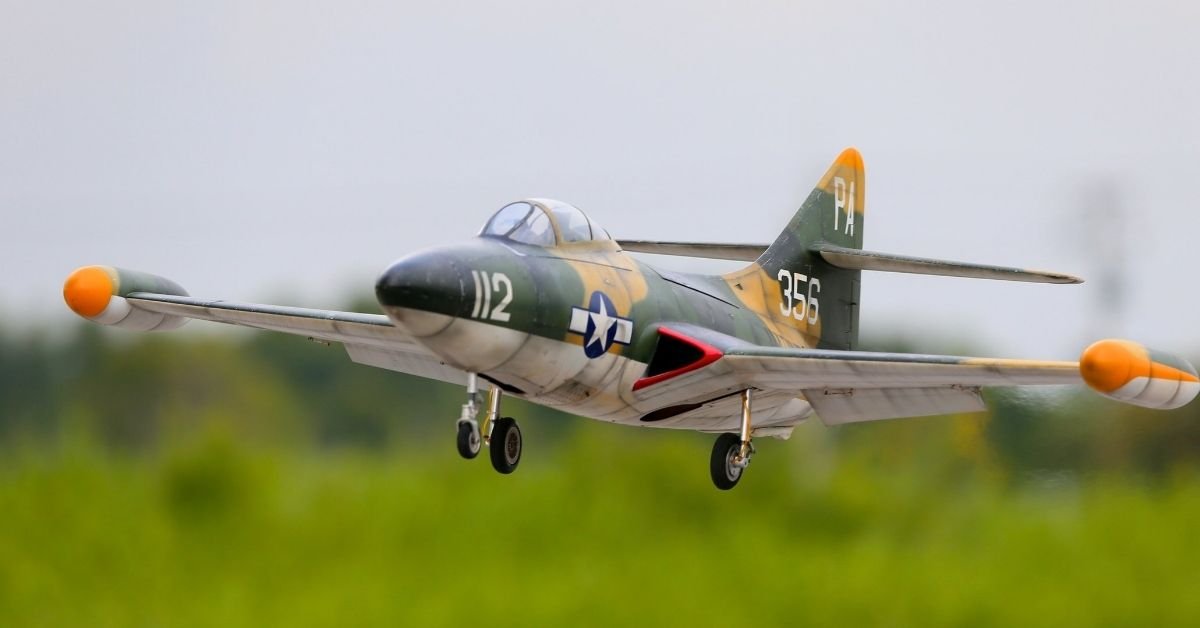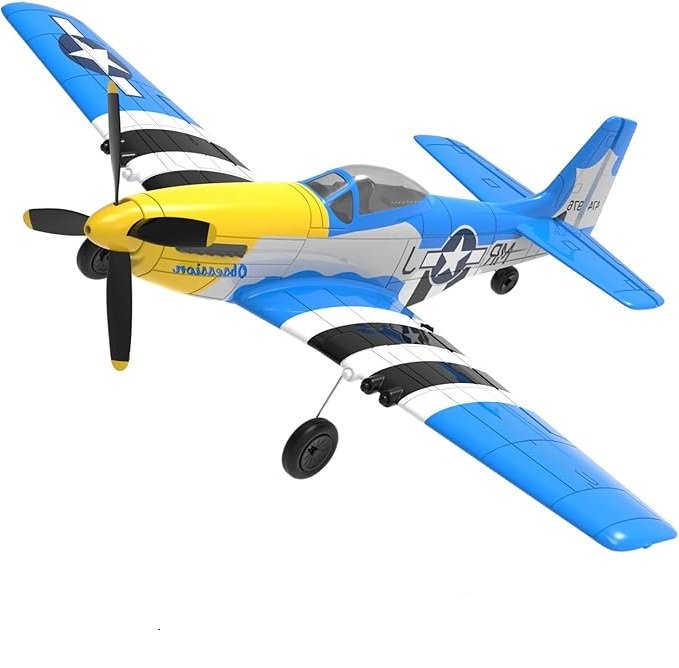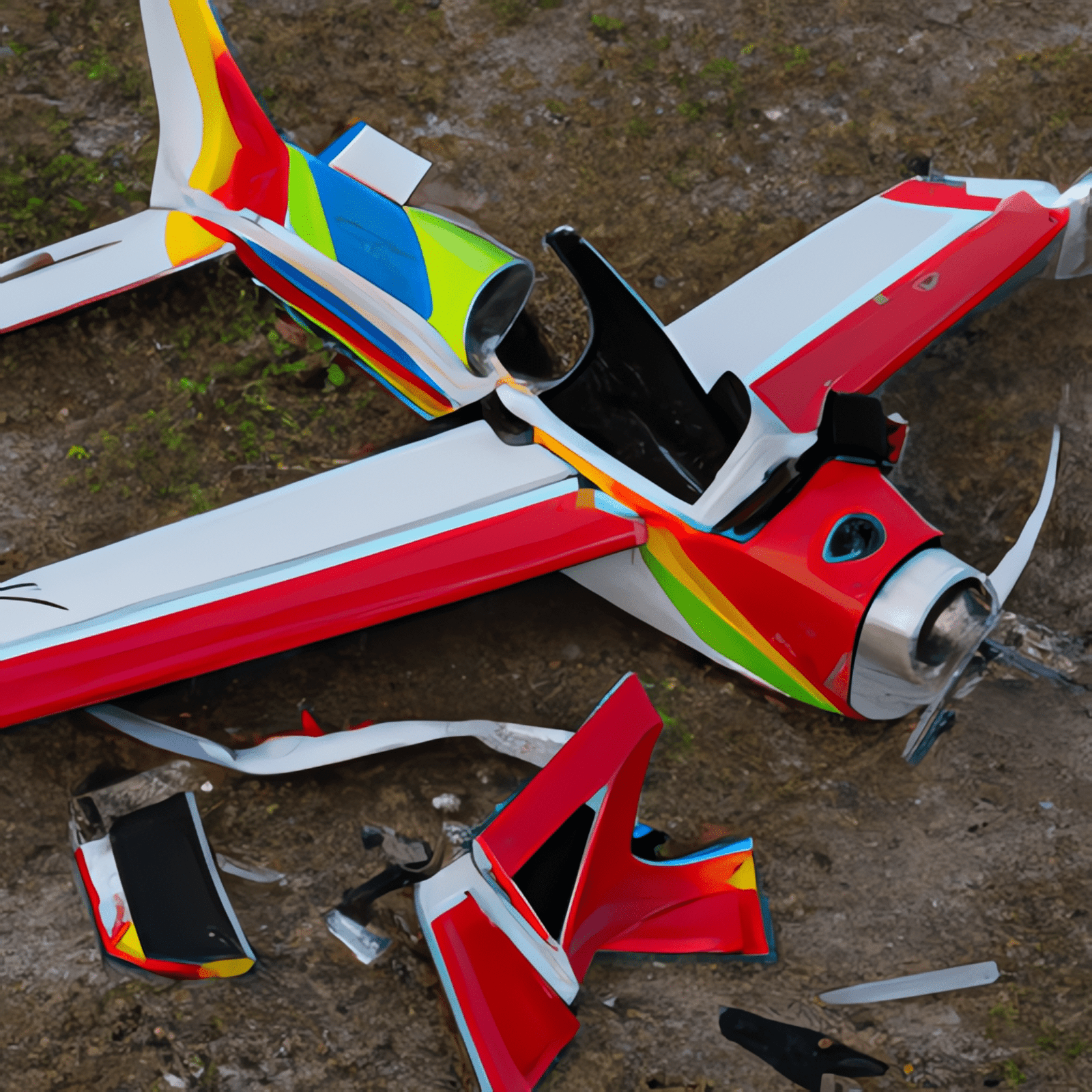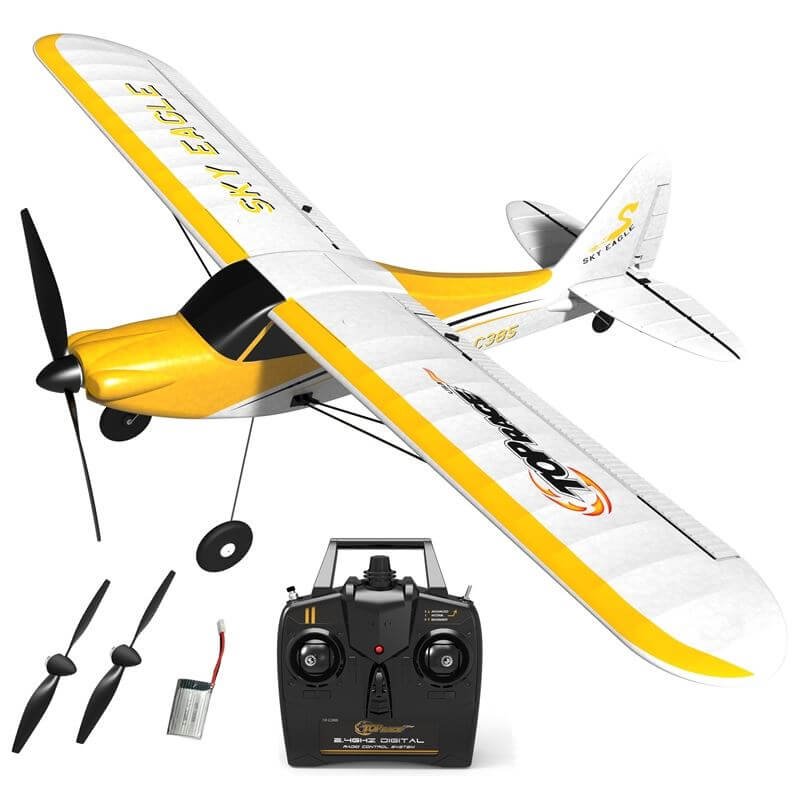An RC jet is probably the most expensive model you’ll ever own, so it’s important to know what you’re going into before you get one. Ideally, you should have mastered your basic flying knowledge and skills with park flyers and trainers as a beginner, and are now ready to level up to flying with jets. So, here is essential information on RC jets for beginners.
- What is the Best RC Jet for Beginners?
- E-flite RC Habu SS Super Sport
- How to Choose Your First Jet
- More Advanced RC Jets
- Are RC Jets Hard to Fly?
- How Fast Can RC Jet Planes Fly?
- How Long Can RC Jets Fly?
- What are the Types of RC Jet Engines?
- What is an EDF RC Plane?
- The RC Turbine Engine
- The Most Powerful RC Jet Engine
What is the Best RC Jet for Beginners?
From our review of what’s currently on the market in terms of flyers’ experiences, the E-flite RC Habu SS Super Sport is one of the best and easiest to fly beginner RC jets, and meets all the criteria we’ve set out below when chosing your first RC jet.
So many reviewers think that this is the best jet to start on, you definitely need to consider it:
E-flite RC Habu SS Super Sport
Here’s a video showing the Habu in action:
How to Choose Your First Jet
If you’ve had some experience with RC trainers or beginner RC planes, you may feel the draw of flying an RC jet. We recommend you follow the advice given below in considering and flying your first-time jet.
The best RC jet for beginners is one that is:
- Slow(er) flying – so that your reactions get used to the speed and maneuverability of RC jets
- Made of durable materials – accidents will happen!
- Assisted by gyro stabilization technology, which will result in a more enjoyable flying experience for novices
- Simple to set up and fly
- Uses “clean” power – an Electric Duct Fan (EDF) motor, rather than petrol driven turbine
MotionRC recommends choosing a jet with an adequate wing surface — like the 64-mm scale-looking F-16s and F-18s — for more lift and overall stability.
Also choose trainer-type jets, which are usually in the lower price ranges, so you won’t be devastated if they crash.
Start with the lowest mm-sized jets like the microjets, which are also less expensive. The smallest jets in the mass market so far are the 28mm to 68mm UMX Series from Horizon Hobby.
In the end, what matters is you get comfortable with flying RC jets first with a simple and easy to fly model and hone your skills at it.
More Advanced RC Jets
Once you’ve mastered the move from slower prop-driven trainers to EDF jets (more about EDF jets here), you may be looking for a bigger challenge in the RC jet world. There is a huge range of ARTF (almost ready-to-fly) and RTF models, as well as kits, to get your teeth into.
There are also types of motors that deliver much more power than the electric EDF jet. These include the turbine and the glow plug (or IC – internal combustion – motor). For more on this, see below.
Balsa ARF (Almost Ready To Fly) models. If you are not so committed yet, these models are a good start as they are not too expensive. You have to have good modeling skills, though, and should be able to organize the necessary resources for support equipment.
Boomerang. Simply designed with predictable flight manners and meant for short-field, grass-runway environments, this brand can do some aerobatics and fit into small cars after flying.
BVM Bandits and Elite Aerosport Shockwaves are recommended for those who already have high flying skills and are comfortable with flying faster aircraft. These brands are well-engineered, more complex, and fly faster, so they would provide the appropriate challenge. The manufacturers offer good service support and spare parts, too.
BVM Bobcats and Kingcats are considered at the top of the list in jet engineering and are recommended for fully committed RC jet flyers. They are easy to set up, with basic systems integrated for entry-level jet pilots, and are great-flying, although also one of the highest-priced.
Scale jets like Skymaster MB-339, T-33, BAe Hawk, and Cougar are recommended for pilots who also know mentors to teach them the basics and who want these cool, more complex models. They also cost more, though, with the basic airframe alone comprising half of the investment, with the other half going into fuel cells, gear, tailpipes, radio equipment, and turbine engine.
The key thing to remember is that the best jets have complete systems all specifically designed for their particular model — they have their own gear, tank, wheels, brakes, tailpipes, etc. In the end, this removes the cost of guesswork and trial-and-error and saves you money. Popular jet brands also have good networks of field support for their clients.
Are RC Jets Hard to Fly?
Jets are not difficult to fly, but they are different. So, they need a pilot’s humility and willingness to learn, especially the difference in take-off and landings, expert throttle use, and efficient energy management, especially since jets fly fast.
The late Bob Violett, the founder of Bob Violett Models (BVM) Jets, an excellent pilot himself and jets expert, emphasizes that the key to successful jet flying is to “master your switches“, to be able to operate your jet without looking down at the transmitter and to be able to operate all your switches intuitively.
Your best bet in starting out in jets is to get an RC flying instructor, or at least an experienced RC flyer, to show you the basics at your local RC club. They’ll most likely use a buddy box – a transmitter running in parallel with yours – to allow you to fly in the knowledge you can pass control over if you get ito difficulty.
In the United States, the Federal Aviation Administration (FAA) limits RC turbine jet flying only to certified turbine pilots and on approved Academy of Model Aeronautics (AMA) sites. You need to obtain an AMA turbine waiver by completing their application requirements before you can fly. Both fixed-wing and rotary-wing waivers are issued with separate application processes.
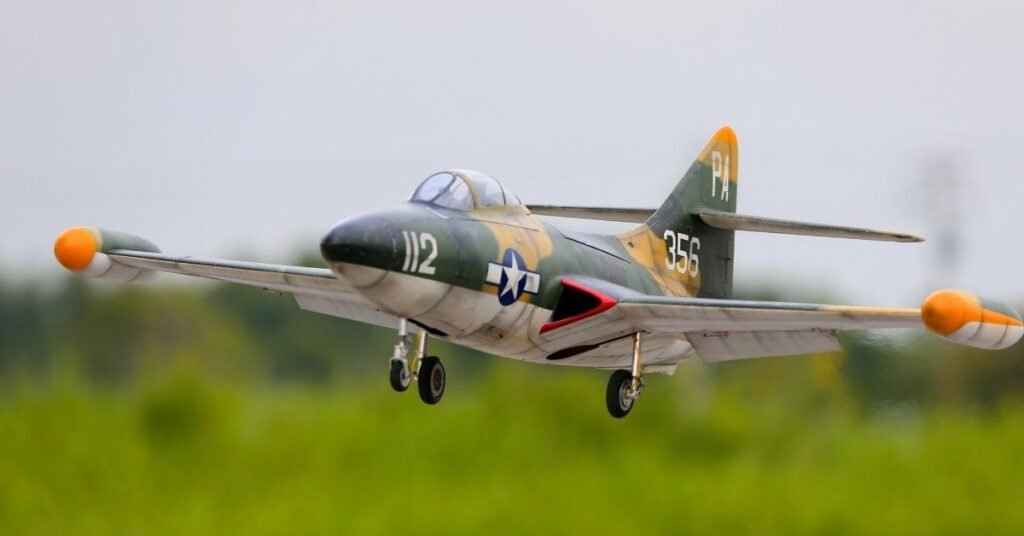
How Fast Can RC Jet Planes Fly?
The fastest RC jet plane flight record is by Niels Herbrich at 749.221 km/h (465.544 mph) in Rothenburg, Germany on August 23, 2017, flying a custom-built 7.5-kilogram bright pink model with a Behotec 180 turbine jet engine that runs on kerosene.
Generally, RC planes can fly between 30mph to 120mph, averaging at 70mph. Plane speed is affected by engine type, propeller, shape, and size of the wings, and the construction materials the plane model is made of.
How Long Can RC Jets Fly?
It depends on the plane type, weight, and size, the number of batteries a plane can carry, and environmental factors like the wind.
Generally, RC planes can fly in 15 to 20 minutes. Larger versions can fly for an hour or more. The longest time and distance ever flown by an RC plane is 38 hours, 53 minutes, over 1,888 miles from Canada to Ireland, on August 9, 2003. An 11-pound custom-built plane named TAM-5 using Coleman lantern fuel was built and flown by Maynard Hill on August 9, 2003.
What are the Types of RC Jet Engines?
Before gas turbine engines, RC jets were basically propelled by two types of engines: engines with a propeller (but which spoiled the plane’s looks) and ducted fan units mounted inside the jet’s fuselage (which made the plane look better).
Then emerged glow plug-powered ducted fans, which were very noisy, and electric duct fans (EDFs) which were less noisy and have become the most popular today.
Later on, there appeared pulse jets and gas turbines. Pulse jets resembled rocket motors more than jet engines, with unrealistically loud fart-sounding noise. Gas turbines made radio-controlled model jets more realistic, mimicking real-world jets, but they are also very expensive.
What is an EDF RC Plane?
EDF RC jet engines – meaning “Electric Ducted Fan” – are very popular and easy to operate. These units comprise an electric motor coupled to a multi-bladed propeller. The propeller draws air into the engine through intake openings in the aircraft’s fuselage at very high revs per minute (RPM), forcing the air down a narrow tube and creating thrust to move the plane forward.
EDF jet engines are very clean and simple, so appeal to novices in the hobby. They lend themselves to easy adaptation into realistic scale models, and there is now a wide variety of accurate RC aircraft available at a modest cost. An example is the superb E-Flite F15 with SAFE and AS3X stabilization, shown below (Link to Amazon details).
The RC Turbine Engine
The RC model turbine engine essentially works by drawing in lots of air, compressing it, adding fuel to the compressed air, setting fire to the compressed air and fuel mixture, and blowing it out the exhaust nozzles. Turbine engines produce power all the time, so they require a lot of fuel.
The following factors should be considered in choosing the right engine for your model application, aside from the price and your budget:
- weight of aircraft
- wing loading vs. intended type of flying
- define the class of thrust from the previous two considerations and compared with the manufacturer’s recommendations
- check UltimateJet’s table of thrust-to-weight-to-price ratios
- decide if you need a high-quality engine to match a high-quality airframe
- consider other complementary factors like how the engine fits the airframe, manufacturer’s service interval and whether it’s locally provided, the engine’s build and reliability quality, whether the idle thrust is low enough for your plane, and what fuel combination it burns on
Basically, the size of the turbine depends on your commitment to RC jet flying. If you’re all in, Model Aviation recommends engines in the 120 to 140 thrust range to provide you with the option to fly almost anything and without heavy operating costs. If you’re only exploring RC jet flying, pick engines in the 60 to 100 thrust range, and just get a bigger engine later when you’re more committed.
The Most Powerful RC Jet Engine
Jet engine power is measured by newtons, kilograms, or pounds of force. The force generated by a jet engine is called thrust, which is the force applied to the aircraft in the direction of flight.
An RC jet engine’s thrust will depend on its motor size. Typical RC jet engines produce around 15 to 25 pounds of thrust.
JetCat, BVM, JetCentral, WrenTurbines, and King-Tek are the most trusted and popular brands in the field. JetCat RC Turbines are considered top tier, and they are the most expensive, too. But, then again, when it comes to RC jet planes, it is advised to invest in the best equipment you can afford for greater assurance of success.

